Esophageal Organoids from Human Pluripotent Stem Cells Delineate Sox2 Functions during Esophageal Specification
- PMID: 30244869
- PMCID: PMC6225525
- DOI: 10.1016/j.stem.2018.08.008
Esophageal Organoids from Human Pluripotent Stem Cells Delineate Sox2 Functions during Esophageal Specification
Abstract
Tracheal and esophageal disorders are prevalent in humans and difficult to accurately model in mice. We therefore established a three-dimensional organoid model of esophageal development through directed differentiation of human pluripotent stem cells. Sequential manipulation of bone morphogenic protein (BMP), Wnt, and RA signaling pathways was required to pattern definitive endoderm into foregut, anterior foregut (AFG), and dorsal AFG spheroids. Dorsal AFG spheroids grown in a 3D matrix formed human esophageal organoids (HEOs), and HEO cells could be transitioned into two-dimensional cultures and grown as esophageal organotypic rafts. In both configurations, esophageal tissues had proliferative basal progenitors and a differentiated stratified squamous epithelium. Using HEO cultures to model human esophageal birth defects, we identified that Sox2 promotes esophageal specification in part through repressing Wnt signaling in dorsal AFG and promoting survival. Consistently, Sox2 ablation in mice causes esophageal agenesis. Thus, HEOs present a powerful platform for modeling human pathologies and tissue engineering.
Keywords: Sox2; esophagus; foregut; organoid.
Copyright © 2018 Elsevier Inc. All rights reserved.
Conflict of interest statement
DECLARATION OF INTERESTS
JMW and SLT have a pending patent application, number 62/570,182, related to this work that describes a method for generating esophageal tissue from human pluripotent stem cells. All other authors have no potential conflicts of interests to declare.
Figures


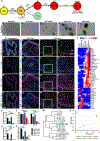
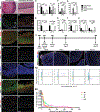
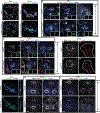
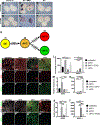
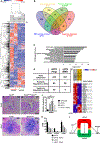
Comment in
-
3D Human Esophageal Epithelium Steps Out from hPSCs.Cell Stem Cell. 2018 Oct 4;23(4):460-462. doi: 10.1016/j.stem.2018.09.010. Cell Stem Cell. 2018. PMID: 30290173
References
-
- Andl CD, Mizushima T, Nakagawa H, Oyama K, Harada H, Chruma K, Herlyn M, and Rustgi AK (2003). Epidermal growth factor receptor mediates increased cell proliferation, migration, and aggregation in esophageal keratinocytes in vitro and in vivo. Journal of Biological Chemistry, 278(3), 1824–1830. 10.1074/jbc.M209148200 - DOI - PubMed
Publication types
MeSH terms
Substances
Grants and funding
LinkOut - more resources
Full Text Sources
Other Literature Sources
Medical
Molecular Biology Databases
Research Materials

